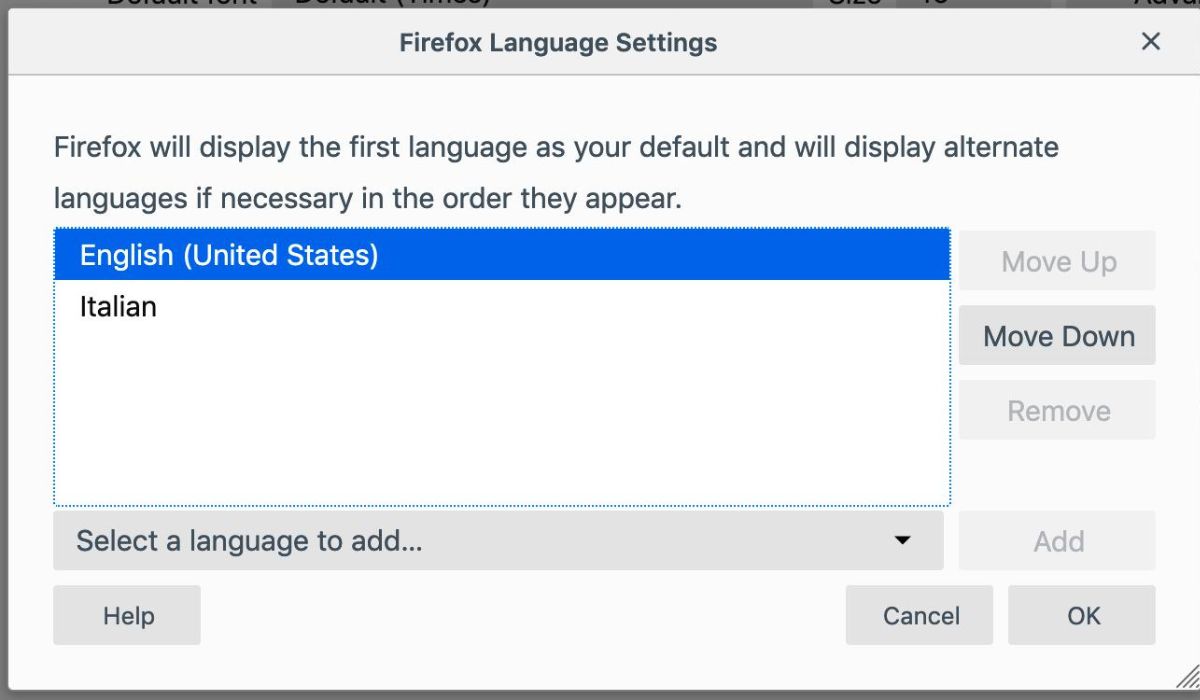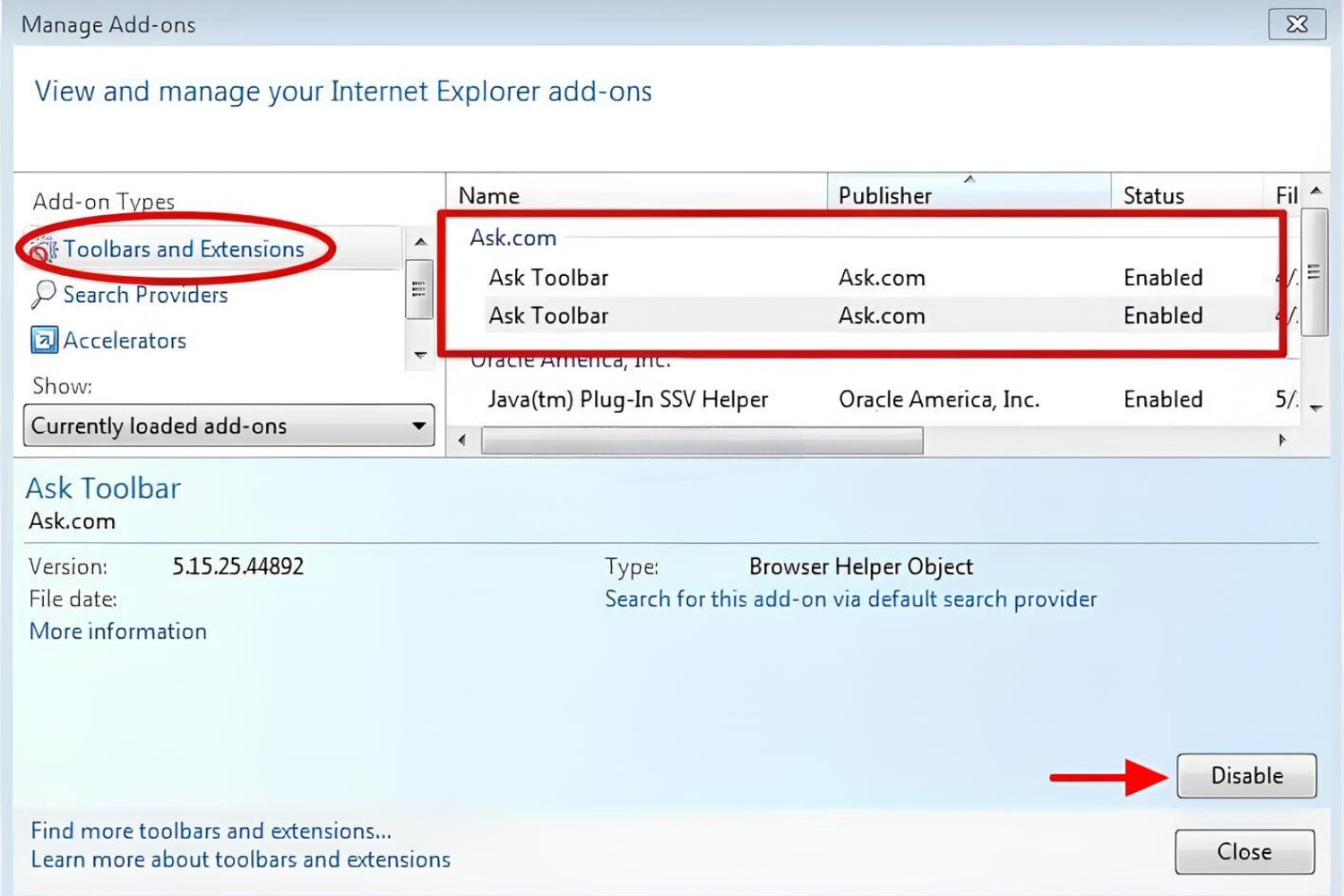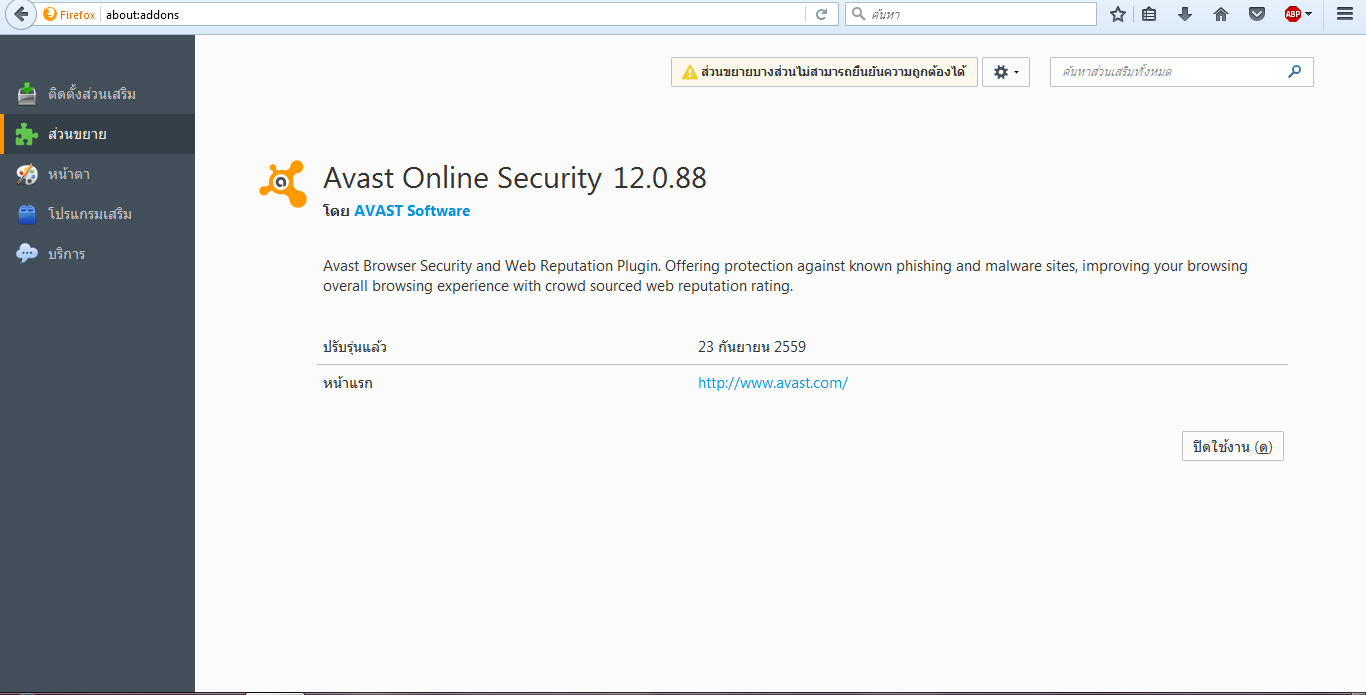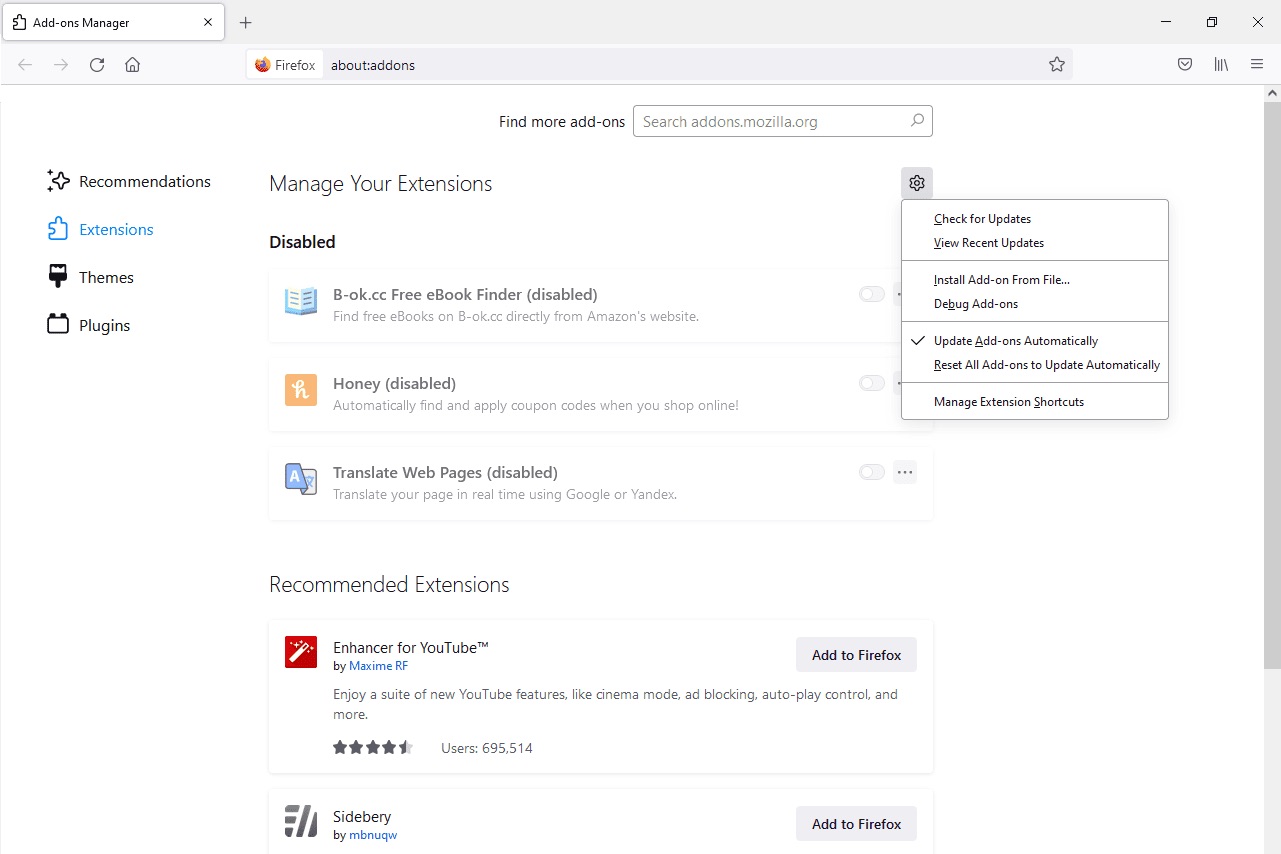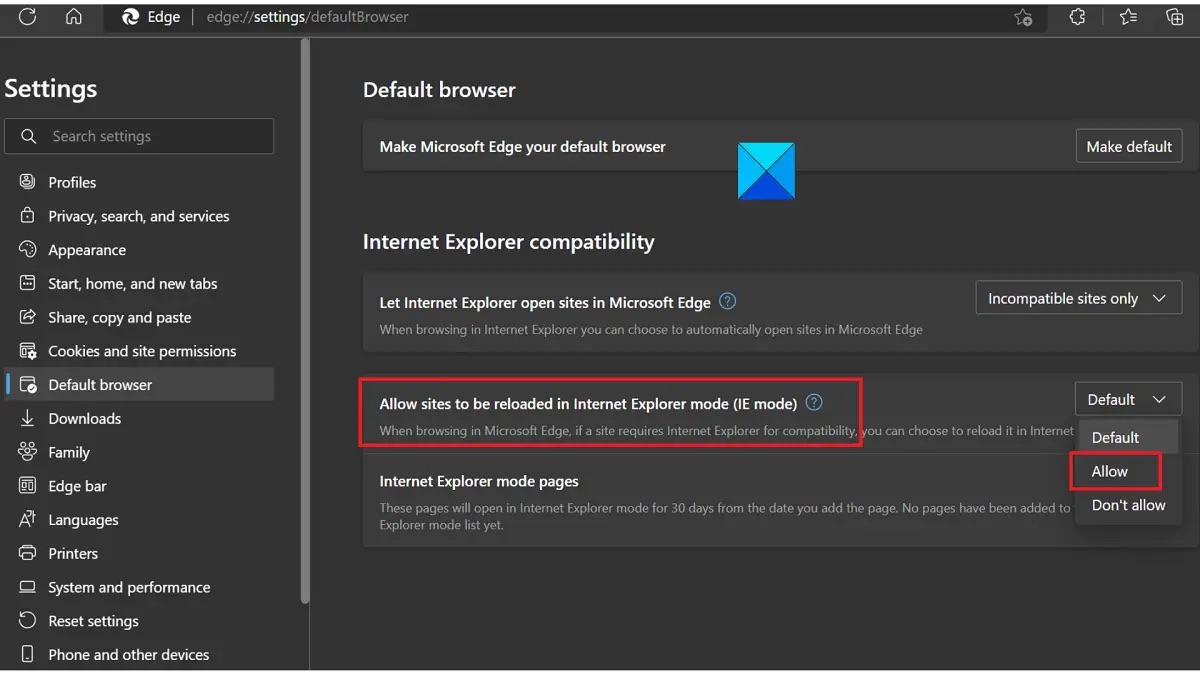Check for Updates
Ensuring that your Firefox browser is up to date is crucial for optimal performance and security. Regular updates not only introduce new features but also patch potential vulnerabilities, safeguarding your browsing experience. Here's how you can easily check for updates in Firefox:
-
Open Firefox: Launch the Firefox browser on your computer. You can do this by clicking on the Firefox icon in your taskbar or desktop.
-
Access the Menu: Once Firefox is open, look for the three horizontal lines in the upper-right corner of the window. This is the menu icon. Click on it to open the Firefox menu.
-
Select Help: In the menu, you will find a section labeled "Help." Click on it to expand a list of options.
-
Click on About Firefox: Within the "Help" section, you will see "About Firefox." Click on this option to access the update information.
-
Check for Updates: Upon clicking "About Firefox," a new window will open, displaying the current version of your Firefox browser. It will also automatically check for updates. If an update is available, you will be prompted to download and install it.
-
Download and Install: If an update is available, simply follow the on-screen instructions to download and install it. Firefox will guide you through the process, and you may need to restart the browser to complete the update.
By regularly checking for updates, you can ensure that your Firefox browser remains secure and equipped with the latest features. This simple practice contributes to a smoother and more enjoyable browsing experience, while also minimizing the risk of encountering compatibility issues or security threats.
Remember, staying proactive with updates not only benefits your browser's performance but also enhances your overall online safety. So, take a moment to check for updates and keep your Firefox browser running at its best!
Restart Firefox
Restarting Firefox can be a simple yet effective solution to various browsing issues. Whether you're experiencing slow performance, unresponsive tabs, or unexpected errors, a quick restart can often resolve these issues and restore the browser to optimal functionality. Here's how you can easily restart Firefox on your computer:
-
Close Firefox: If Firefox is currently open, the first step is to close the browser. You can do this by clicking the 'X' in the top-right corner of the window or using the 'File' menu and selecting 'Exit'. Ensure that all Firefox windows and tabs are closed before proceeding.
-
Reopen Firefox: After closing the browser, you can reopen Firefox by clicking on the desktop icon, taskbar icon, or by searching for 'Firefox' in the start menu. Alternatively, you can double-click the Firefox shortcut on your desktop to launch the browser.
-
Restore Previous Session: Upon reopening Firefox, the browser may prompt you to restore your previous session if it was abruptly closed. This feature allows you to regain access to tabs and windows that were open before the restart, providing a seamless browsing experience.
-
Verify Functionality: Once Firefox has been restarted, take a moment to verify its functionality. Open a few tabs, navigate to different websites, and ensure that the browser is responsive and performing as expected. If you encountered any specific issues before the restart, check to see if they have been resolved.
By restarting Firefox, you essentially give the browser a fresh start, allowing it to clear temporary data and refresh its processes. This can help alleviate performance issues, address minor glitches, and provide a smoother browsing experience. Additionally, restarting Firefox can be particularly beneficial after installing updates or making changes to browser settings, ensuring that these modifications take effect seamlessly.
In essence, restarting Firefox is a simple yet valuable practice that can contribute to a more reliable and enjoyable browsing experience. By incorporating this routine into your usage of the browser, you can effectively address common issues and maintain Firefox in an optimal state, ready to cater to your browsing needs. So, the next time you encounter any hiccups while using Firefox, consider giving it a quick restart to potentially resolve the issue and get back to seamless browsing.
Clear Cache and Cookies
Clearing the cache and cookies in your Firefox browser is a fundamental maintenance task that can significantly impact your browsing experience. Over time, the cache, which stores temporary data from websites, and cookies, which track user activity, can accumulate and potentially lead to performance issues or privacy concerns. By regularly clearing these elements, you can ensure that your browser operates efficiently and protect your online privacy.
Here's a step-by-step guide to clearing the cache and cookies in Firefox:
-
Open Firefox Preferences: Launch Firefox and click on the menu icon located in the upper-right corner of the window. From the dropdown menu, select "Preferences" to access the browser's settings.
-
Navigate to Privacy & Security: Within the Preferences window, locate and click on "Privacy & Security" in the left-hand sidebar. This section contains various privacy and security-related settings for your Firefox browser.
-
Scroll Down to Cookies and Site Data: In the Privacy & Security section, scroll down to find the "Cookies and Site Data" area. Here, you will have the option to manage how Firefox handles cookies and site data.
-
Click on Clear Data: Under the "Cookies and Site Data" section, click on the "Clear Data" button. This action will prompt a window to appear, allowing you to confirm the clearing of cookies and site data.
-
Select Cached Web Content: While in the "Clear Data" window, ensure that the checkbox next to "Cached Web Content" is selected. This ensures that the browser's cache, which stores temporary internet files, is also cleared along with the cookies.
-
Confirm and Clear: Once you have selected the appropriate options, click on the "Clear" button to initiate the clearing process. Firefox will proceed to remove the selected data, including cookies and cached web content.
By following these steps, you can effectively clear the cache and cookies in your Firefox browser, promoting improved performance and privacy. Clearing the cache frees up storage space and can resolve issues related to outdated or corrupted cached data, leading to faster page loading times and smoother browsing. Additionally, clearing cookies helps protect your privacy by removing tracking data that websites may have stored on your device.
Incorporating regular cache and cookie clearing into your browsing routine can contribute to a more streamlined and secure online experience. Whether you're troubleshooting performance issues or prioritizing privacy, this simple maintenance task empowers you to maintain control over your browsing environment, ensuring that Firefox operates at its best while safeguarding your privacy.
Disable Add-ons
Add-ons, also known as extensions or plugins, are valuable tools that enhance the functionality of your Firefox browser. However, at times, certain add-ons may conflict with browser processes or cause unexpected behavior, leading to performance issues or instability. In such instances, temporarily disabling add-ons can serve as a practical troubleshooting step to identify and address the underlying concerns.
Here's how you can disable add-ons in Firefox:
-
Open Firefox: Launch the Firefox browser on your computer by clicking on the Firefox icon in your taskbar or desktop.
-
Access the Menu: Look for the three horizontal lines in the upper-right corner of the window, which represents the menu icon. Click on it to open the Firefox menu.
-
Choose Add-ons: Within the menu, select "Add-ons" to access the Add-ons Manager. This section provides an overview of the installed extensions and plugins in your Firefox browser.
-
Manage Add-ons: In the Add-ons Manager, you will find a list of the installed add-ons categorized as Extensions, Themes, and Plugins. Navigate to the specific category containing the add-on you wish to disable.
-
Disable the Add-on: Locate the add-on you want to disable and click on the corresponding "Disable" button or toggle switch. This action temporarily deactivates the add-on without uninstalling it, allowing you to observe the browser's behavior without its influence.
-
Verify Functionality: After disabling the add-on, take a moment to verify the browser's performance and behavior. Open tabs, navigate to websites, and assess whether the issues or conflicts associated with the add-on have been resolved.
By disabling add-ons, you can effectively isolate potential sources of browser issues and determine whether specific extensions or plugins are impacting Firefox's performance. This process enables you to pinpoint the root cause of any instability or unexpected behavior, empowering you to make informed decisions regarding the management of add-ons in your browser.
Additionally, disabling add-ons can be particularly beneficial when troubleshooting compatibility issues or addressing sudden changes in browser behavior. By systematically evaluating the impact of individual add-ons, you can gain valuable insights into their influence on Firefox's performance and take appropriate measures to optimize your browsing experience.
Incorporating the practice of temporarily disabling add-ons into your troubleshooting approach equips you with a proactive strategy for maintaining a stable and efficient Firefox browser. Whether you encounter performance concerns or seek to identify the source of unexpected behavior, this method allows you to methodically assess the impact of add-ons and make informed adjustments to enhance your browsing environment.
Reset Firefox Settings
Resetting Firefox settings can serve as a powerful solution when you encounter persistent issues or irregularities in your browsing experience. This process effectively restores the browser to its default state, eliminating potential conflicts, corrupted configurations, or unintended modifications that may be impacting its performance. By initiating a reset, you can effectively address a wide range of concerns, including unresponsive behavior, unexpected errors, and performance degradation, ultimately rejuvenating your Firefox browser.
To reset Firefox settings, follow these steps:
-
Open Firefox: Launch the Firefox browser on your computer by clicking on the Firefox icon in your taskbar or desktop.
-
Access the Menu: Look for the three horizontal lines in the upper-right corner of the window, which represents the menu icon. Click on it to open the Firefox menu.
-
Choose Help: Within the menu, select "Help" to expand a list of options.
-
Select Troubleshooting Information: From the "Help" section, choose "Troubleshooting Information." This option provides access to Firefox's troubleshooting tools and settings.
-
Click on Refresh Firefox: In the Troubleshooting Information page, locate the "Refresh Firefox" button. Clicking on this option initiates the process of resetting Firefox to its default state.
-
Confirm the Refresh: A confirmation prompt will appear, detailing the impact of the refresh process. Click on the "Refresh Firefox" button to proceed with the reset.
Upon initiating the refresh process, Firefox will proceed to reset its settings, retaining essential information such as bookmarks and passwords while removing extensions and custom settings. This comprehensive reset effectively eliminates potential sources of instability or performance issues, providing a clean slate for the browser to operate optimally.
By resetting Firefox settings, you can effectively address a myriad of concerns, including unresponsive behavior, unexpected errors, and performance degradation. This process serves as a valuable troubleshooting step, particularly when conventional measures fail to resolve persistent issues. Additionally, a reset can be particularly beneficial after encountering malware or unwanted software, ensuring that the browser is restored to a secure and reliable state.
Incorporating the practice of resetting Firefox settings into your troubleshooting approach equips you with a proactive strategy for maintaining a stable and efficient browsing environment. Whether you encounter persistent performance concerns or seek to eliminate unexpected behavior, initiating a reset empowers you to rejuvenate Firefox and restore it to its optimal state, ready to cater to your browsing needs.









